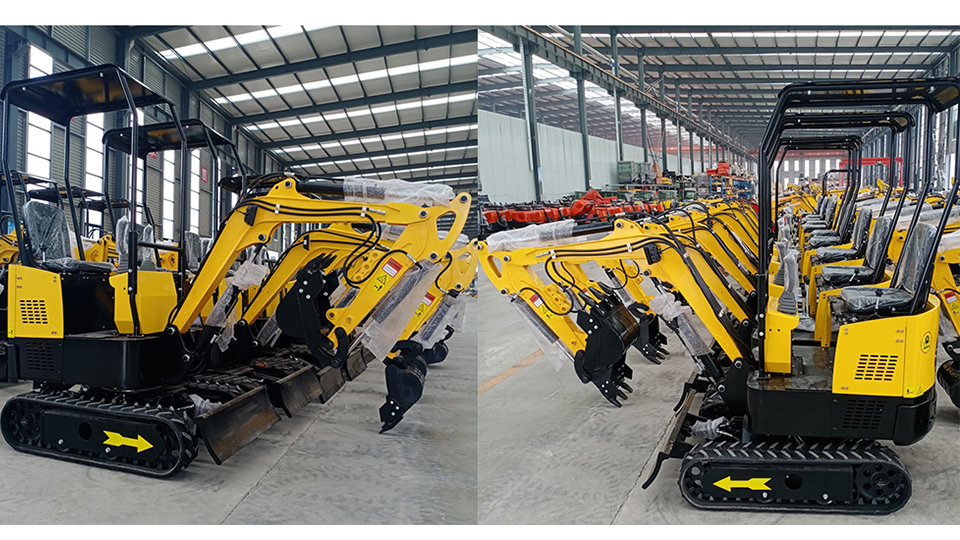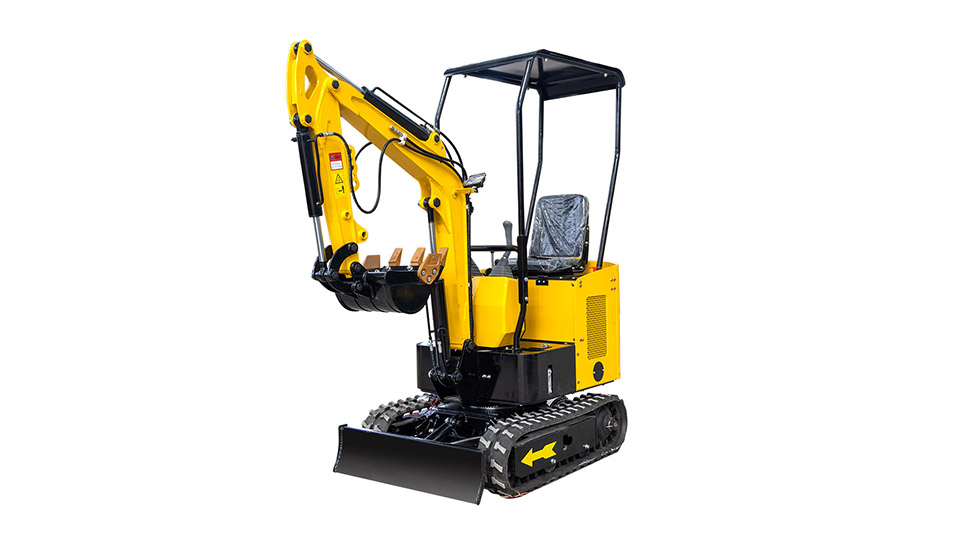The Earthmovers' Duel: Excavator vs. Bulldozer – Choosing the Right Machine for Your Project
In the realm of heavy construction, the excavator and the bulldozer stand as titans, each a powerful force capable of moving mountains of earth and shaping landscapes. While both are essential pieces of equipment found on countless job sites, their capabilities, strengths, and optimal applications differ significantly. Choosing the wrong machine for a task can lead to inefficiency, increased costs, project delays, and even safety hazards.
This technical article delves into a comprehensive comparison of excavators and bulldozers, dissecting their design, operational principles, strengths, weaknesses, and ideal applications. By understanding the fundamental differences between these earthmoving giants, project managers, contractors, and operators can make informed decisions, ensuring the right machine is deployed for maximum productivity and project success.
Fundamental Design and Operational Principles
The core differences in their design dictate their distinct operational capabilities:
Excavator:
Design: An excavator comprises a tracked or wheeled undercarriage, a rotating upper structure (house) that houses the engine and operator cab, and a multi-jointed boom, stick (arm), and bucket. This articulated arm allows for a wide range of motion and precise digging, lifting, and placement.
Operation: Excavators primarily work from a stationary position, using their boom and stick to dig, lift, and swing material. The rotating upper structure allows them to work in a 360-degree radius without moving the entire machine. They excel at digging below ground level, loading trucks, and performing intricate tasks.

Bulldozer:
Design: A bulldozer consists of a large, powerful tractor unit with a substantial horizontal blade mounted at the front. Tracks are the most common undercarriage, providing excellent traction and stability for pushing and grading. Some smaller bulldozers may have wheels.
Operation: Bulldozers are designed for pushing and grading large volumes of material across relatively level or gently sloping terrain. The blade is used to cut, push, and spread soil, gravel, and other materials. They are highly effective at clearing land, creating access roads, and rough grading.
Strengths and Weaknesses: A Comparative Analysis
To determine the right machine for a project, a detailed comparison of their strengths and weaknesses is crucial:
Excavator Strengths:
Versatility: The articulated boom and 360-degree rotation make excavators highly versatile. They can dig, lift, load, grade, and perform various other tasks with different attachments.
Precise Digging: Excavators excel at digging below grade, creating trenches, foundations, and other excavations with accuracy.
Loading Capabilities: Their ability to swing and lift makes them ideal for loading trucks, hoppers, and other material transport equipment.
Working in Confined Spaces: The rotating upper structure allows excavators to work effectively in tighter areas compared to bulldozers, which require more maneuvering room.
Reaching and Lifting: The boom and stick provide significant reach and lifting capacity for placing materials and handling objects.
Attachment Variety: Excavators can be equipped with a wide array of attachments, including breakers, grapples, shears, and augers, expanding their functionality.
Excavator Weaknesses:
Limited Material Pushing Capacity: While they can move some material with their bucket, excavators are not designed for pushing large volumes of material over long distances efficiently.
Lower Travel Speed: Excavators typically have lower travel speeds compared to bulldozers, making them less efficient for long-distance material movement across a site.
Stability on Steep Slopes: While some excavators are designed for slope work, they generally have lower stability on steep inclines compared to bulldozers with their wider tracks and lower center of gravity.

Grading Efficiency: While capable of grading, excavators are less efficient at large-scale, consistent grading compared to the wide blade of a bulldozer.
Bulldozer Strengths:
High Material Pushing Capacity: Bulldozers are exceptionally efficient at pushing large volumes of soil, gravel, and other materials over relatively short to medium distances.
Excellent Grading Capabilities: The wide blade allows for efficient and accurate rough and finish grading of large areas.
Superior Traction and Stability: The tracked undercarriage provides excellent traction and stability, making them ideal for working on uneven terrain and steeper slopes (depending on the model).
Land Clearing Power: Bulldozers are highly effective at clearing vegetation, removing obstacles, and preparing sites for construction.
Creating Access Roads: Their pushing and grading capabilities make them well-suited for creating temporary access roads and haul roads on construction sites.
Bulldozer Weaknesses:
Limited Digging Depth: Bulldozers are primarily surface-level machines and are not efficient at digging deep excavations below grade.
Poor Loading Capabilities: They are not designed for lifting and loading trucks or other transport equipment.
Lower Maneuverability in Tight Spaces: The rigid blade and the need to maneuver the entire machine make bulldozers less suitable for confined work areas.
Limited Reach: They lack the reach and lifting height of an excavator, making them unsuitable for tasks requiring material placement at a distance or height.
Attachment Limitations: While some bulldozers can be equipped with rippers for breaking up hard ground, their attachment versatility is significantly less than that of excavators.
Ideal Applications: Matching the Machine to the Task
Understanding the strengths and weaknesses of each machine leads to identifying their ideal applications:
When to Choose an Excavator:
Trenching and Excavation: Digging foundations, utility trenches, basements, and other below-grade excavations.
Loading Trucks and Hauling: Efficiently loading and unloading materials from trucks, dumpers, and other transport vehicles.
Material Handling and Lifting: Lifting and placing pipes, concrete barriers, and other construction materials.
Demolition: Using attachments like breakers and shears to demolish structures.
Grading and Leveling in Confined Areas: Performing precise grading and leveling in smaller or restricted spaces.
Slope Work (with appropriate models and precautions): Excavating and shaping slopes.
Working in Rivers and Wetlands (with amphibious models): Performing dredging and other aquatic tasks.
When to Choose a Bulldozer:
Land Clearing: Removing trees, stumps, brush, and other vegetation to prepare a site.
Site Preparation: Rough grading and leveling large areas for construction.
Creating Access Roads and Haul Roads: Building temporary roadways for construction traffic.
Spreading and Compacting Soil and Fill: Moving and spreading large volumes of earth for embankments and fills.
Pushing Material Over Short to Medium Distances: Moving stockpiles of soil, gravel, and other materials.
Reclamation and Environmental Work: Shaping land for erosion control and other environmental projects.
Working on Steep Slopes: Providing stability for pushing and grading on inclines (with appropriate models and operator skill).
Ripping Hard Ground: Using a ripper attachment to break up rock, asphalt, and other hard surfaces.
Project-Specific Considerations: Making the Right Call
The ultimate decision of whether to use an excavator or a bulldozer (or both) depends on a thorough analysis of the specific project requirements:
Type of Work: What are the primary tasks involved? Is it mostly digging, loading, or pushing and grading?
Volume of Material to be Moved: How much earth needs to be excavated or pushed? Bulldozers excel at large volumes over distance, while excavators are better for focused digging and loading.
Working Environment: Is the site confined or open? Is the terrain level, sloping, or uneven? Are there obstacles to navigate?
Required Precision: Does the project require precise digging and grading (excavator) or more general earthmoving (bulldozer)?
Distance of Material Movement: How far does the material need to be moved? Bulldozers are more efficient for pushing over shorter distances.
Project Timeline and Budget: Consider the efficiency of each machine for the specific tasks and their associated operating costs (fuel, maintenance, operator wages).
Availability of Attachments: If specialized tasks are required, consider the availability and cost of appropriate attachments for each machine type.
In many large-scale projects, a combination of excavators and bulldozers working in tandem provides the most efficient solution. Excavators can dig and load material, while bulldozers can spread and grade it. Effective project planning involves understanding the strengths of each machine and deploying them strategically to optimize workflow.
Technological Advancements: Blurring the Lines and Enhancing Capabilities
Modern excavators and bulldozers are equipped with advanced technologies that enhance their capabilities and sometimes blur the lines between their traditional roles:
GPS and Grade Control Systems: Both excavators and bulldozers can be equipped with sophisticated GPS and grade control systems, improving accuracy and efficiency in grading and excavation tasks.
Hybrid and Electric Models: The push for sustainability is leading to the development of hybrid and fully electric excavators and bulldozers, offering reduced emissions and noise levels.
Advanced Hydraulic Systems: Modern hydraulic systems in excavators offer improved power, efficiency, and control for a wider range of tasks.
Telematics and Machine Monitoring: Both types of machines can be equipped with telematics systems that provide valuable data on performance, fuel consumption, and maintenance needs.
Quick Couplers: Excavators benefit significantly from quick couplers, allowing for rapid attachment changes and increased versatility on the job site.
These advancements are making both excavators and bulldozers more capable and adaptable, but their fundamental design and primary operational strengths still dictate their optimal applications.
Conclusion: Choosing the Right Earthmoving Partner
The excavator and the bulldozer are indispensable tools in the construction industry, each possessing unique strengths and weaknesses. There is no single "better" machine; the optimal choice depends entirely on the specific demands of the project.
By carefully analyzing the type of work, volume of material, working environment, required precision, and other project-specific considerations, project managers and operators can make informed decisions about which machine – or combination of machines – will deliver the most efficient, cost-effective, and safe results. Understanding the fundamental differences between these earthmoving titans is not just about choosing a piece of equipment; it's about selecting the right partner to shape the landscape and bring construction projects to successful completion. The earthmovers' duel has no single winner, only the right tool for the right job.
Post time:Sep-25-2020
